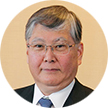News Updates
- Benefits of Integrating Patient Engagement with Diversity, Equity, and Inclusion in New Medical Product Development: A Call for Action
- Drug Shortages in the Global South: A Proposed Parallel Tech and Reg Transfer Framework
- Fair Pay for Patient Engagement: Navigating the Evolving Landscape of Remuneration
- Industry’s Window to Express Interest in Africa Continental Product Evaluation Pilot Closes End of February 2024
- Accelerating Adoption of eLabeling in Singapore: One Company’s Journey
The "Glory" of Drug Safety
 When I was a young boy in pharmacy school, I thought that a pharmaceutical company involved nothing more than the R&D of new drugs, with the development of these new drugs being their highest priority. News on promising new drugs repeatedly made the front page of newspapers, always attracting my attention. However, after joining the pharmaceutical business, I gradually began to realize that the attainment of drug/product safety is a crucial and vital function of a pharmaceutical company. Now, half a century of experience later, I firmly believe that drug safety is of primary importance.
When I was a young boy in pharmacy school, I thought that a pharmaceutical company involved nothing more than the R&D of new drugs, with the development of these new drugs being their highest priority. News on promising new drugs repeatedly made the front page of newspapers, always attracting my attention. However, after joining the pharmaceutical business, I gradually began to realize that the attainment of drug/product safety is a crucial and vital function of a pharmaceutical company. Now, half a century of experience later, I firmly believe that drug safety is of primary importance.
The impact of drug safety can be demonstrated using the case of a COX-2 selective inhibitor and its role in cardiovascular disorders, from the beginning of this century. Unexpected serious adverse reactions, including QT prolongation and Stevens-Johnson syndrome, resulted in the withdrawal of the promising new drug from the market. Its impact was historically huge. It left behind a feeling of anxiety around the safety of new drugs introduced into our society. Such safety issues may arise without any significant warning to patients, health care providers, or the company producing the drug.
Compared to the nature of these safety issues, the business of new drug R&D is well controlled. All human volunteers are registered and under the close monitoring of researchers. If something strange happens, any one of the several drug development stakeholders can “flip the switch” to stop it immediately, often with little noticeable commotion. The postmarketing phase, on the other hand, is totally different. A single headline that hints at a potential negative impact of a new drug can result in the Office of Safety being inundated with telephone calls from physicians, regulators, patients, attorneys, and the mass media, to name just a few. Our workload triples. Irrespective of the fact that the new drug provides more benefit than harm to the large majority of recipients, this issue must be dealt with. Every issue is unique, difficult, and complex.
On a fundamental level, the evaluation of effectiveness or efficacy is not very complicated. It is simply the comparison between the results of a new drug and the current best available therapy. However, after the drug is marketed, evaluation of that drug is left to each individual patient and physician. There are many contributing factors at play, including individual beliefs and individual levels of acceptable risk. The question remains – how do we explain the real impact of a drug’s benefits and risks to people who hold such a variety of thoughts and beliefs?
Today, drug safety measures still greatly depend on spontaneous reporting, a principle introduced soon after the thalidomide tragedy in the early 1960s. Someone skeptical about the relationship between a symptom and drug use reports it to a regulator, the manufacturer, or media, which triggers systematic review and investigation of causality and/or probability. While the early 1960s were a long time ago, this spontaneous reporting system will remain an important checkpoint in our drug safety system. The time has come to introduce a real-time online monitoring system and/or leverage other aspects of “big data.”
More often than not, there are no big safety issues in the news. This speaks to the efforts of safety professionals and other volunteer stakeholders. How much and how hard they work towards the safe and effective use of drugs is not often easily understood. What remains is how to precisely evaluate, recognize and reward the efforts and achievements of safety staff and stakeholders.
This President's Message originally appeared in the February 2017 Global Forum - read the entire issue.
To learn more about drug safety, plan to attend our Pharmacovigilance Conference in Europe.
